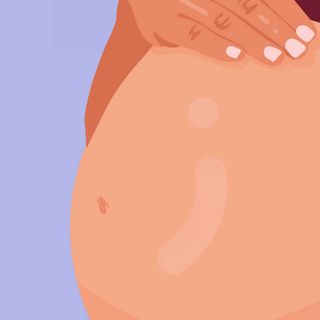
Yeast Infections Are More Common Among Pregnant Women
And so are other vaginal infections.

Oh, the joys of being a woman: Not only does pregnancy change your body in ways that are not always pleasant, it also makes you more prone to yeast infections, as well as other vaginal infections like bacterial vaginosis and trichomoniasis.
For women who have a history of yeast infections, aka candidiasis, their chances of a yeast infection during pregnancy are even higher, says Dr Padmalatha V V, an OB/GYN at SPARSH Hospitals in Bangalore.
The key is to catch an infection early; oral medication required to treat advanced infections has been linked to miscarriage and birth defects. But because pregnancy can also change the vagina’s natural discharge and odor, it can be difficult to tell what, exactly, is going on down there. What follows is a primer on your vaginal health, so you can spot a yeast infection during pregnancy, early.
The vagina
The vagina is filled with good bacteria, just like your gut. Unlike your gut, the composition is a little different; the bacteria in your vagina are mostly lactobacilli, which produce lactic acid, among other things, that maintain an ideal pH level — typically 3.8 to 4.5 on a 14-point scale, which is considered mildly acidic. This mild acidity is natural and self-cleaning — it keeps bad fungus (yeast), bacteria and parasites from colonizing, i.e. from causing an infection.
When something happens to these bacteria, the pH levels in your vagina change. And pregnancy is a big something.
The vagina on pregnancy
The precise mechanism isn’t fully understood, but the hormonal changes that accompany pregnancy can affect the good bacteria, and thus the pH levels of the vagina. You can think of your vagina as a home, your good bacteria as you, and the hormones as weather: Pregnancy is a form of extreme weather — let’s call it a hurricane — that your home (vagina) may or may not be equipped to withstand, which can really affect how healthy and alive you (your bacteria) keep.
Related on The Swaddle:
The Super Common, Mostly Treatable Women’s Health Problem No One Talks About
Pregnancy isn’t the only thing that can leave vaginal pH shook and put you more at risk for a yeast infection. Antibiotics (blizzards) can also kill off the good bacteria, change your vagina’s pH, and up your chances of a yeast infection, regardless of pregnancy. And vaginal douches — which, Dr Padmalatha V V says are completely unnecessary and actually quite harmful (smog!) — disrupt the vagina’s healthy, natural and self-cleaning pH, allowing yeast infections and other vaginal infections to take hold.
(And that’s how climate change affects your vagina, thanks for stopping by!)
Pregnancy’s physiological changes also affect vaginal discharge, known as leukorrhea during this time. During pregnancy, its color, consistency and volume might be different, typically increasing dramatically and appearing thin, white and milky. Your natural vaginal odor might change slightly during pregnancy, too, becoming fainter, stronger or simply different.
Confusingly, changes in the appearance and color of vaginal discharge are also signs of a vaginal infection, making it difficult to know what, exactly, is going on down there.
The vagina with a yeast infection during pregnancy
A yeast infection is heralded by excess white discharge; it may also be thick or ‘lumpy.’ It may be accompanied by a change in odor to a ‘yeasty’ smell. More helpful, if uncomfortable, signs of a yeast infection during pregnancy include burning or itching around the vulva (the exterior) or inside the vagina (the inner canal). Your vulva may also appear red or swollen, and you might experience discomfort while urinating or while having sex.
At any point a yeast infection is suspected during pregnancy, it’s wise to consult a doctor, Dr Padmalatha VV advises. Mild yeast infections of the vulva can easily be treated by medicated cream, and infections in the vagina, by antifungal pessaries. Catching yeast infections before they become severe means you can avoid oral medicine, which enters the blood stream and may jeopardize the pregnancy.
Mild yeast infections can be cleared up quickly, which becomes more important during the final weeks of pregnancy when there’s a chance of passing the infection to the baby as it travels through the vagina during birth (known as thrush). Luckily, a yeast infection isn’t dangerous for the baby, either during pregnancy or birth, but it is an irritation best avoided.
Any other changes in vaginal discharge during pregnancy warrant a trip to the gynac’s office, too. Other common vaginal infections during pregnancy include bacterial vaginosis, which is signaled by a grayish discharge with a fishy smell, and trichomoniasis, by a yellow-green discharge with a generally unpleasant smell. Both, if untreated, can endanger the pregnancy.
Liesl Goecker is The Swaddle's managing editor.
Related


Preventing Gestational Diabetes Isn’t One‑Size‑Fits‑All, Researchers Say
